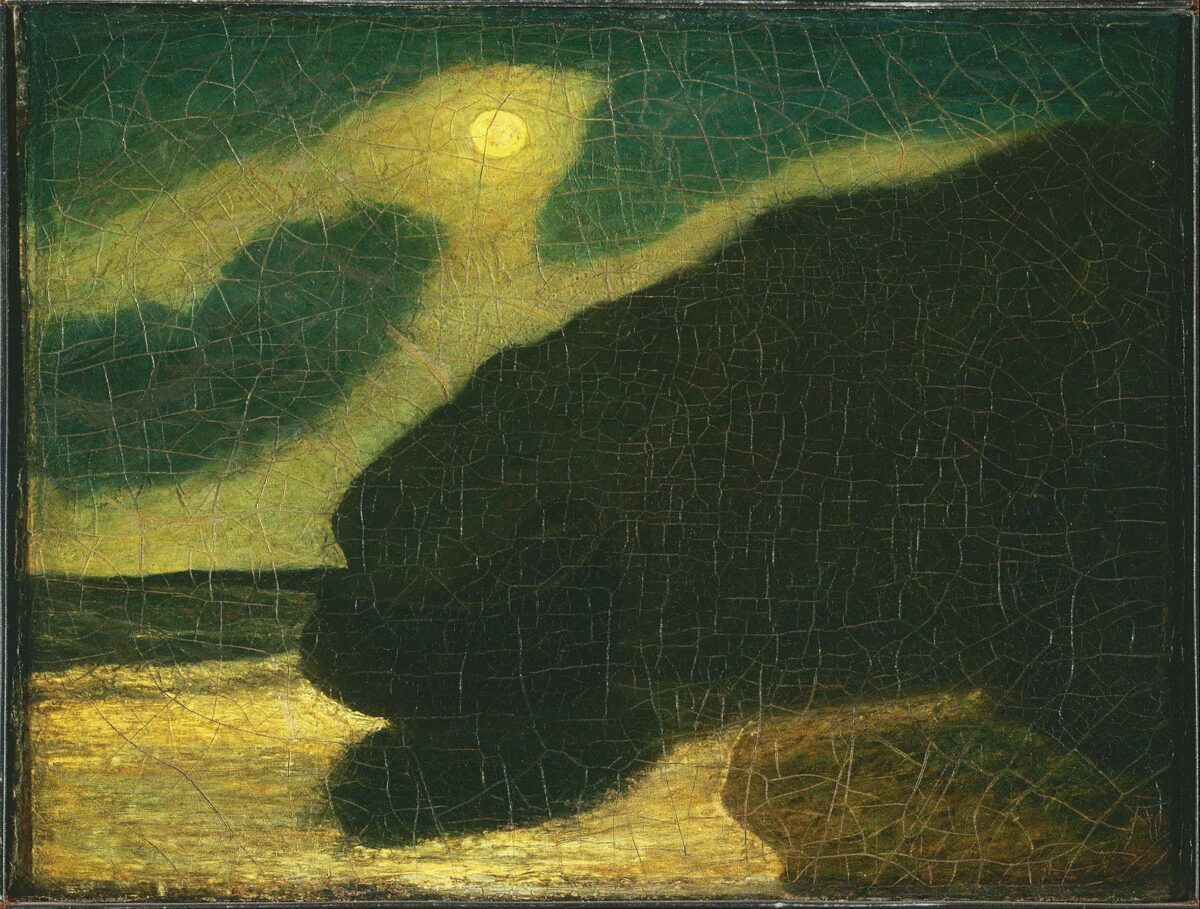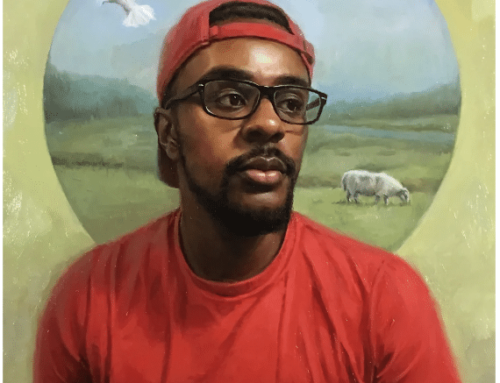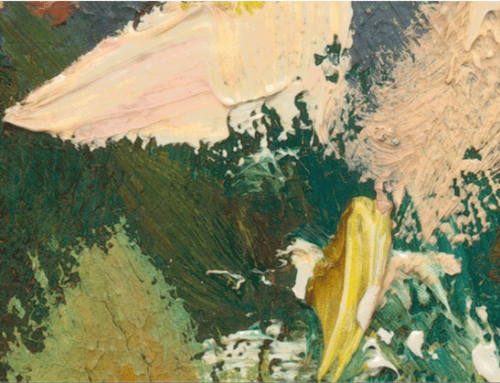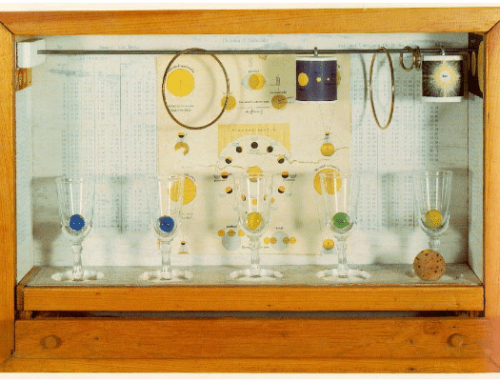“Art evokes the mystery without which the world would not exist.”
– Rene Magritte
Who doesn’t love a mystery? One of art’s important jobs is to remind us that not everything about our experience of the world is known or perhaps even knowable. The same can be said for the great paintings of the world. We can know everything there is to know about them, and we still won’t have exhausted their treasures, their delights, their meaning, and their mystery.
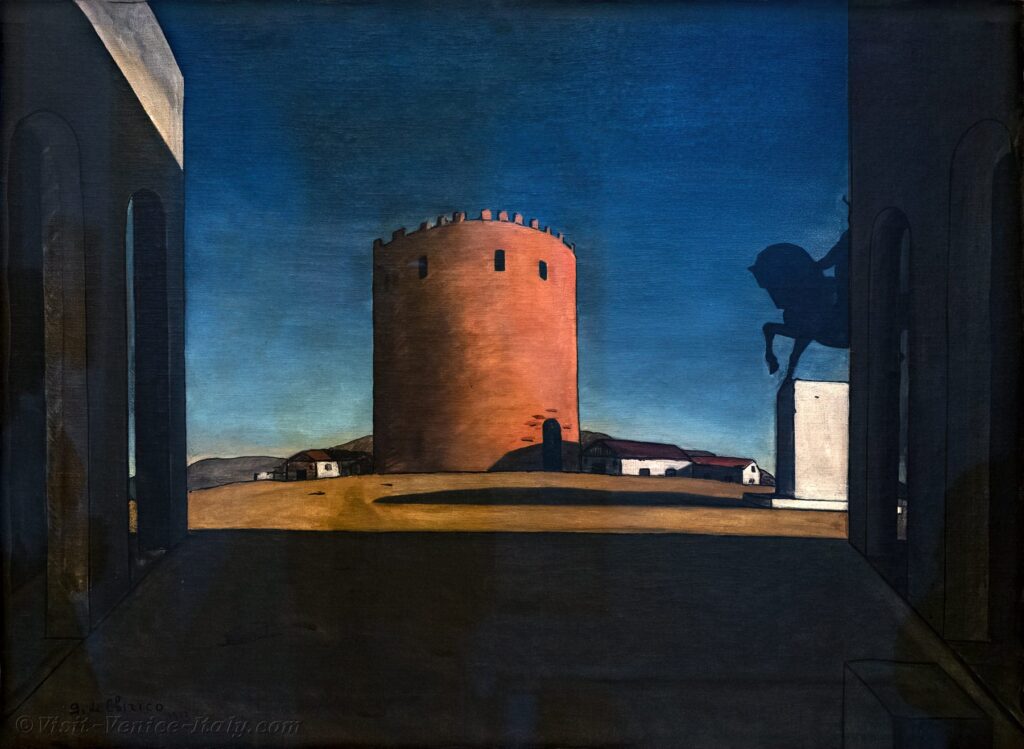
Giorgio de Chirico, The Red Tower, 1913
Some paintings are expressly about mystery. “The Red Tower” is the work of Giorgio de Chirico, an Italian painter whose work helped spark the surrealist movement. In surrealism, the source of art is the subconscious mind, and the governing principle is the logic of dreams. A tourist page for the City of Venice describes this painting: “This picture shows an unobstructed view where silence reigns, only shadows that stretch disproportionately seem to be capable of mobility in time suspended. Not a single bird, not a single living presence in this unreal landscape: Dream or nightmare scenery?”
What world is this and why does it seem at once so strange and so familiar? What hidden meaning is hinted at in the obscure symbolism of tower, shadow, statue and sky? Mystery reigns.
Consider though: Dreams are actually quite real, at least to the dreamer; so what does that say about how we define “reality”? “I dream my painting, and I paint my dreams,” said Vincent van Gogh.
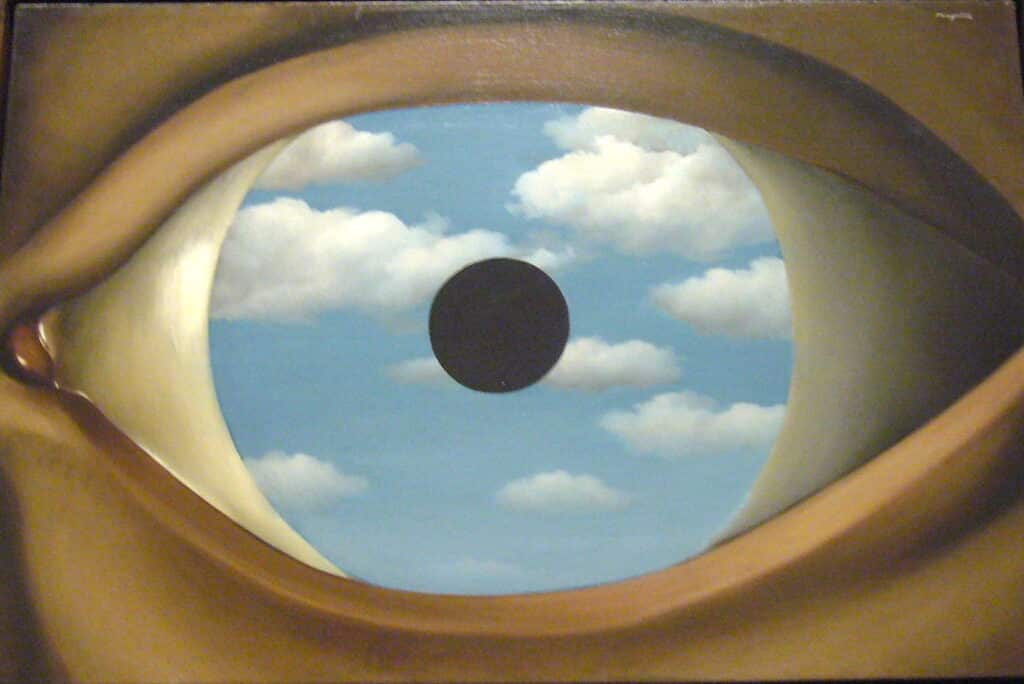
Rene Magritte, The False Mirror, 1928 (detail from a photo by James Manners on flickr)
Turning now from de Chirico, Rene Magritte was a fully fledged, card-carrying member of the surrealist movement. His paintings are marvelous puzzles without solutions that often employ dreamlike imagery to hint at the uncertainties and paradoxes within art and perception. In The False Mirror from 1928, the image is initially jarring; to see the mystery you must look closely. The Museum of Modern Art walks us through it:
“A huge, isolated eye stares out at the viewer. Its left, inner corner has a vivid, viscous quality. The anatomical detailing of this area and its surface sheen contrast with the matte, dead-black of the eye’s pupil, which floats, unmoored, against a limpid, cloud-filled sky of cerulean blue. Although the areas surrounding the eye’s iris are carefully shaded and modeled, giving the illusion of a play of light on three-dimensional form, the sky displays no trace of convexity; its puffy clouds are beautifully rendered, but not its blue expanse. As a result, the sky appears as though seen through a circular window rather than mirrored in the spherical, liquid surface of an eye.”
The False Mirror asks: Do we really know what happens when we make and look at art?
If we take Magritte at his word when he says that without mystery the world would not exist, we come to a startling conclusion: these artists aren’t just making up puzzles and willfully trying to be obscure; they’re using art to reveal mysteries that actually exist out there in the world.
These mysteries, then, are realities we normally gloss over and choose not to think about. Doing so from time to time, however, is apt to make the world a more interesting place.
Mystery Begins Where Certainty Leaves Off
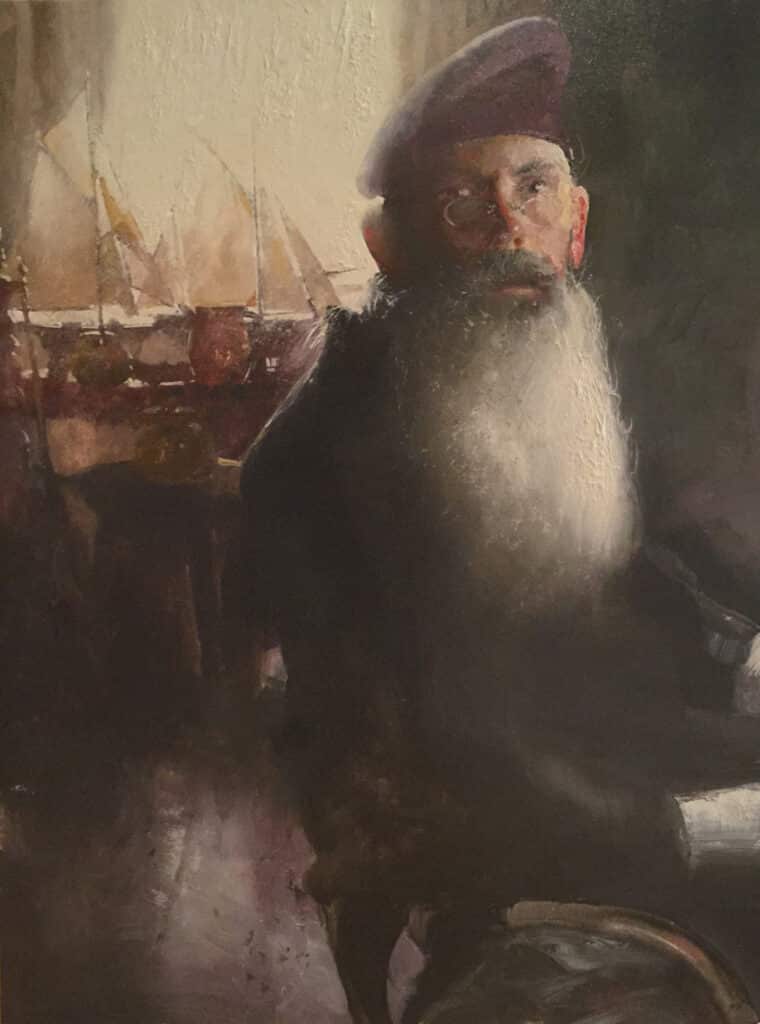
CW Mundy, The Veteran
There is an air of mystery in quite a few of the paintings of CW Mundy that arises from the artist’s fusion of observation and imagination. As a painter, Mundy likes to shake things up by eliminating the “knowns,” to keep his work from becoming formulaic or rote, often beginning a representational painting in uncertainty, with a seemingly random underlying abstraction. Mundy will be among the many nationally known and prominent artists teaching at the 2023 Plein Air Convention in May.
In the mystery,
– Chris

